Special Issue:
Indigenous economic development and service innovation under changing welfare regimes
Editorial
Hart Cohen
Western Sydney University
This is Volume 12 Issue 1 2018 and our only edition for 2018. We are pleased to have worked with a great group of writers and guest editors for this special issue on a topic that emerged from a seminar held at Western Sydney University. I attended that seminar and was impressed with the range and quality of the papers. Karen Soldatic and I met subsequently to discuss a possible publication and, as they say, the rest is history. The issue reflects and builds on that original meeting and in this way affords insight into the service regimes related to the First Peoples of Australia with some comparative work included on the First Nations of Canada and Scandinavia.
I am delighted to commend this issue as it has been an honour to work with Karen and her team in bringing these ideas to print. Special thanks go to all the contributors and reviewers for this issue. Thanks to Myra Gurney for her copyediting work, Antonio Castillo for his work on book reviews, and to Roman Goik for his production of this issue.
Hart Cohen
October 2018.
Guest Editorial
Bep Uink
Post-Doctoral Research Fellow, Kulbardi Aboriginal Centre, Murdoch University
Karen Soldatic
ARC DECRA Senior Research Fellow, Institute for Culture and Society, Western Sydney University
Editorial Reflections on Indigenous Economic Practices of Contestation, Resistance and Wellbeing.
The right to economic development has become a core area of international human rights debate (Balakrishnan, Heintz & Elson, 2016). It is often argued that economic development is vital for the full realisation of human freedom and should be a core criterion on which to judge our capacity to produce outcomes for valuable human ends (Sen, 1999). Economic development, its potential to eradicate extreme forms of poverty alongside its generative capacity to promote human flourishing, is now integrated into the normative framework of human wellbeing (UNDP, 2015), culminating in global instruments such as the Sustainable Development Goals and the United Nations Human Development Index.
Economic development is also posited to be a vehicle for achieving self-determination among Indigenous peoples (e.g. Alfred, 2009; Loomis, 2000). Indeed, the United Nations lists the right to the ‘improvement of economic and social conditions’ within the Declaration on the Rights of Indigenous Peoples (UNDRIP, 2007), suggesting that economic development is a fundamental human right. Yet for Indigenous peoples, the right to economic development is highly contested. Globally, the available empirical evidence strongly suggests that the right to economic development, as currently framed, continues to actively undermine the fundamental principles of Indigenous freedom, resulting in devastatingly low levels of Indigenous wellbeing (see Silburn et al., 2016). Moreover, rather than economic development enabling Indigenous capability and flourishing, it appears to be denying Indigenous peoples those rights of cultural integrity, political equality and self-governance (UNDRIP, 2007). In white-settler societies in particular, such as Australia, national governments foreground the nation’s right to economic development above all rights. In turn, dispossession of Indigenous peoples’ land for global mining markets, the winding back of Indigenous welfare programs with the onset of neoliberal workfare conditionality, alongside harsh austerity measures that reframe Indigenous governance structures, organisations and programs around the ethos of capitalist economic development values, appear as a continuance of colonisation through new forms of economic paternalism. For Indigenous peoples, there remains an inherent tension in placing economic development as a precursor for self-determination, with many Indigenous leaders and scholars arguing that participation in economic development, as currently framed, is akin to assimilation (Dockery, 2010).
In considering these tensions, it is necessary to inquire into the specific ways in which economic development is unfolding within Indigenous nations and communities and to review the outcomes of such development. Further, if self-determination is to be the end-point of Indigenous economic development, it is important to consider ways in which such development may complement and boost the wellbeing of Indigenous peoples. In service of this need, this Special Issue brings together articles that are dedicated to describing how Indigenous peoples around the globe practise and engage socio-politically with economic development. By including international examples, this Special Issue allows Indigenous economic development practices to be considered within the specific times and contexts in which they are embedded. The articles contained herein aim to illustrate the possibility of Indigenous practices of economic development when located within Indigenous ontological practices of wellbeing; health and wellbeing outcomes among Indigenous peoples are strengthened when they self-determine the ‘what, how, who and when’ of economic development. Conversely, several of these articles clearly illustrate new forms of colonial management of Indigenous peoples, with western neoliberal structures of economic paternalism propelling Indigenous welfare subjects into the confines of a casualised labour market and into the hands of a raft of community services in order to maintain precarious access to welfare payments.
Before we discuss how Indigenous economic development and wellbeing are related, it is necessary to define what we mean by ‘wellbeing’. We adopt a broad and integrated conceptualisation of wellbeing put forth by many Indigenous peoples, which involves the intertwining of self with relationships with the environment, relationships with others and relationships with aspects beyond the self, including cosmology and spirituality (Department of the Prime Minister and Cabinet, 2017; Kirmayer et al., 2011; Taylor, 2008). As Taylor (2008) notes, various single indicators of wellbeing used in western conceptualisations, such as employment status and home ownership, do not accurately reflect the breadth of Indigenous impressions of wellbeing. Hence, when referring to wellbeing in this issue we invoke a more expansive, Indigenous conceptualisation.
At a practical level, the relationship between Indigenous peoples’ economic development and wellbeing is underpinned by the value that both Indigenous and settler populations have placed on natural resources. As several of the papers in this issue highlight (e.g. Coates; Spurway), Indigenous conceptions of wellbeing involve connections with natural resources (e.g. the land and sea) and the lived environment. For example, in their papers for this Special Edition, Spurway highlights that among Aboriginal and Torres Strait Islander peoples in Australia, socio-emotional wellbeing is informed by a holistic collection of factors, including the quality of land on which they live and the practices which help the land recover from natural disasters. Coates describes how settler societies have placed immense financial value on natural resources. For instance, there has been a long history of trade of natural resources from Indigenous Canadians to settlers, often in exchange for educational, legal and healthcare resources. Economic development and wellbeing are intrinsically linked because the natural resources that are integral to Indigenous peoples’ wellbeing are also highly valued economic commodities.
Beyond practical underpinnings, it is helpful to have a theoretical framework upon which to understand the influence of economic conditions and practices on human development and wellbeing. Borrowing from developmental psychology, Ecological Systems Theory (EST; Bronfenbrenner, 2005 [1992]) and its later variant, the Bioecological Model (Bronfenbrenner & Morris, 2006), take a lifespan perspective to human development and wellbeing, where development is presumed to occur at all stages of an individual’s life (i.e. from birth to childhood to adulthood and to senescence). The EST is holistic in that factors outside of an individual are hypothesised to influence their wellbeing (Rosa & Tudge, 2013). We briefly review the features of EST before discussing how the articles in this issue highlight its central tenets.
A central feature of the EST is the proposition that human development unfolds through interactions between an individual and their context, termed ‘processes’ (Bronfenbrenner & Morris, 2006). Two points are important to note. First, processes are bidirectional in nature, such that an individual’s personal characteristics can affect how they interact with their context, and an individual’s context can affect their development. Second, ‘context’ within EST represents more than an individual’s physical environment, such as the house they live in or the land that surrounds them; it is also the interactions and relationships they have with other individuals and institutions (Bronfenbrenner & Morris, 2006). Contexts are described as having multiple layers, spanning from the most proximal to the individual to the most distal. This is illustrated in Figure 1 where the layers of context that surround an individual can be conceptualised as a series of concentric circles.
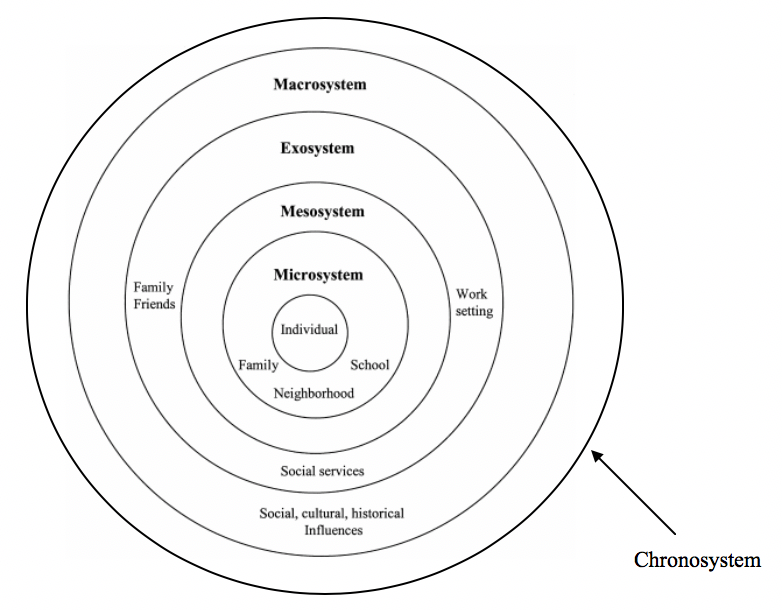
Figure 1. Graphical representation of the levels of context in Ecological Systems Theory (Bronfenbrenner, 1979). The chronosystem was later added to the outermost layer of the environment.
Figure 1 also shows that the most proximal context to the individual is the microsystem, which consists of their face-to-face interactions with those in their immediate environment (e.g. family, community members and colleagues) as well as interactions with their physical environment, such as the bed they sleep in, the house they live in and the food they consume. Immediately surrounding the microsystem is the ‘mesosystem’, which consists of relationships between units within the microsystem. An example here would be an individual’s family group or community attending a local housing service (see Crabtree, Davis, Foster, & Klerk in this issue for an example). Less proximal to the individual is the ‘exosystem’, a context that the individual does not enter per se, but which consists of the social and economic policies that influence the individual’s wellbeing via inter-relational dynamic effects. For example, the policies and practices of a local agency responsible for Indigenous affairs would sit within the exosystem. Most distal to the individual is the macrosystem, which consists of the economic, social, legal, political and educational values that a society holds. Last, and enveloping the micro to macro systems, is the chronosystem, which refers to where an individual sits within their own timeline of development and within the historical context in which they develop (Bronfenbrenner & Morris, 2006).
Several benefits accrue from the adoption of an EST lens in understanding the role of economic development in Indigenous wellbeing. First, EST was born out of a need to articulate the process by which more distal contexts (i.e. the exosystem and beyond) affect wellbeing (Rosa & Tudge, 2013). Such a focus on factors outside the individual and how these factors influence wellbeing is consistent with the holistic approach to wellbeing adopted by many Indigenous people (Taylor, 2008). Thus, using EST to understand links between Indigenous peoples’ economic development and wellbeing represents a smooth transition between psychological science and Indigenous conceptions of wellbeing. Adopting an EST lens to understanding Indigenous economic development in the context of wellbeing also provides scholars with scope to explore and interrogate the interactions that take place between individuals and their contexts when Indigenous people engage in economic development practices. Indeed, a significant strength of all the papers in this Special Issue is their focus on how individual actions inform broader economic and social systems.
An EST viewpoint also allows scholars to understand the bi-directional influences between Indigenous peoples’ economic development practices, the broader economic climate and their wellbeing. That is, scholars are invited to view Indigenous peoples’ acts of economic development as shaped by, as well as shaping, historical and current social-economic trends. This notion of bidirectionality is particularly helpful in navigating the tension between Indigenous peoples’ economic development for self-determination versus adoption of colonial approaches to economic development (e.g. neoliberalism; Petray & Gertz, this issue). This is because bi-directional influence allows for individuals and communities to re-shape the economic norms and values within which they practise development. A final advantage of the application of EST is that it allows for interdisciplinary investigation into Indigenous economic development and wellbeing. It goes without saying that interdisciplinary practice is necessary when working across multiple systems, ranging from family and community practices to investigations of how societal values shape wellbeing. The selection of articles in this Special Issue illustrates the rich and divergent understandings that emerge from an interdisciplinary bidirectional engagement with critical knowledge practices of Indigenous epistemologies alongside diverse western disciplines, such as sociology and political economy (Chilisa, 2011).
The concept of bi-directionality that is central to EST is well articulated by Coates (this issue). In chronicling the economic interactions between Indigenous Canadians and settlers from the mid-18th century to the present day, Coates highlights how Indigenous Canadians’ decisions to engage in trade deals with settlers have shaped Canadian economic policy. For instance, they detail the processes and decision-making of Indigenous Canadians who signed treaties with settlers, which saw the exchange of access to land for several ‘wellbeing resources’ (e.g. access to health care and education). They note that signing of treaties meant the economic environment of Canada changed substantially by setting a new standard for how governments could access and use natural resources. Yet the act of treaty signing was also bi-directional because Indigenous Canadians’ decisions were influenced by dominant political ideologies at the time as well as historical trends. This example is consistent with the EST notion that dominant cultural patterns and practices and current social conditions feed back towards a person’s wellbeing (Rosa & Tudge, 2013).
Petray and Gertz also provide an example of the bidirectionality principle in their ethnographic account of economic development in Gugu Badhun. Gugu Badhun is an Aboriginal nation in northern Queensland where citizens have taken several steps to reorient their economy away from the economic ideals of settlers (i.e. neoliberalism). These steps are framed as acts of self-determination and have implications. In describing the steps, the article illustrates how an Indigenous community has reshaped aspects of the broader economic system in which they are embedded. Further, Petray and Gertz provide several observations of how Gugu Badhun citizens’ actions disrupt the status quo of how Indigenous community members have traditionally engaged with the Australian government. In doing so, the actions of the Gugu Badhun citizens work to reshape the macrosystem by changing the values that inform the operation of the economy.
A further example of Indigenous peoples’ interactions with the broader social and economic systems in which they develop is provided by Kim Spurway, who presents findings from a rapid review of the literature on the use of Indigenous Knowledge in Australian environmental disaster management procedures. Spurway concludes that minimal research has focused on the use of Indigenous Knowledge to inform disaster management procedures, primarily because substantial implementation of such knowledge has not occurred. If such knowledge was integrated into natural disaster management practices in the future, however, this would represent local Indigenous communities interacting with government services (which would occur in EST terms at the level of the exosystem) to achieve wellbeing outcomes. As Spurway notes, when Indigenous ways of disaster management are shared with local environmental services, there is a backflow effect on local Indigenous people’s wellbeing, because it assures the quality and protection of country which sustains them.
Because EST suggests that interactions with other people in the environment are what drive development, it is important to understand the impact of the quality of these relationships on wellbeing outcomes. Crabtree and colleagues illustrate the importance of high-quality, authentic relationships between community members and broader government entities in their review of three evaluations of the sustainability of town camps in Alice Springs. Crabtree and colleagues find that when the evaluation team came from the local community and had built authentic relationships with Indigenous residents of the town camps, the outcome of the evaluation favoured keeping the camps open. By contrast, a later evaluation team consisting of members from a government body was unable to establish meaningful relationships with stakeholders. In turn, the evaluation outcome of the government body favoured closure of the town camps. Furthermore, representations of tenants’ views towards home ownership differed based on how ownership was conceptualised by evaluation team members. Crabtree and colleagues demonstrate how conceptions of home ownership and autonomy over housing resources are shaped by the quality of interactions between residents and those conducting the evaluation. Moreover, the article is an excellent illustration of how residents’ interactions with a feature of the physical environment (i.e. the various town camps) can influence their wellbeing.
This crucial role of authentic interpersonal relationships within and between levels of context is also highlighted in Line Melbøe’s article from Norway. Melbøe presents a rich narrative analysis of interviews with three Sami men who self-identify as living with disability across urban, rural and remote landscapes. The aim of the article is to understand the interstice of Sami identity, masculinity and disability across differing spatial dimensions and the ways this interstice informs personal reflexive identity formation, which often moves through a continuum of the customary to the modern that is influenced by localised, colonised practices of ‘Norwegianisation’. Each of the participants report that they rely heavily on leveraging interpersonal relationships in order to engage in traditional Sami activities (e.g. reindeer herding, fishing). In turn, this engagement in traditional Sami activities fosters a sense of Sami identity. Strong interpersonal relationships are thus necessary to participate in activities that help the men retain a Sami identity. Similar to findings from Crabtree and colleagues, the Sami men’s interactions with local health services are less positive and result in a missed opportunity for them to experience their Sami identity. This article further illustrates how practices that occur between individuals and government-led organisations influence Indigenous people’s sense of identity.
Senior and colleagues provide an admirable example of how processes that occur within the individual’s direct context (the microsystem in EST) do not necessarily have to involve interactions with other people, but instead can involve interactions with objects and symbols (Bronfenbrenner & Morris, 2006). Senior and colleagues describe the role of a local newspaper within a remote Arnhem Land community – The Ngukurr News – in fostering community members’ wellbeing. The Ngukurr News serves as an outlet for important community information, a bridge between events and happenings in nearby communities, and has brought opportunities for economic development via advertising investment opportunities within the community as well as a partnership with a national university that sees significant investment in the paper. Most pertinent to a discussion of wellbeing is that The Ngukurr News acts as a catalyst for community members to come together and discuss happenings within the community. Community members’ interactions with an object (the newspaper) allow them to join as a community and share their views of recent events. Such interaction is described as enhancing community members’ wellbeing. Further, the newspaper has become a symbol, signaling the coming together of community members for sharing time.
Fits and Soldatic illustrate that events in the broader economic system that target development (in a western sense) can hinder Indigenous peoples’ wellbeing. The authors present findings from thematic analysis of focus groups conducted with health professionals in northern Queensland, who support Indigenous residents who identify as having a disability. As the authors illustrate, national policy changes which were driven by a ‘neoliberal disinvestment in regional economies’ led to a shift in how support workers interacted with government services. In turn, service providers were less able to support the wellbeing of their Indigenous clients. The article maps how changes in the macrosystem (i.e. national policy) infiltrate to disruptions in interpersonal interactions at the exosystem (e.g. how support workers interact with other government services), which in turn influence the quality of service and interaction that occurs between a support worker and an Indigenous person. Moreover, the article highlights the detrimental impact on Indigenous peoples’ wellbeing that occurs when the bidirectional flow of influence between an individual and their macrosystem becomes one-sided. That is, changes to national disability policy which favour a neoliberal definition of ‘economic participation’ overwhelmingly have blocked Indigenous Australians’ ability to influence broader economic values, particularly in relation to disability and participation.
The issue concludes with a book review of Mia Mia (Kickett-Tucker, Bessarab, Coffin, & Wright, Eds.) by Annick Thomassin. Thomassin suggests that Mia Mia provides scholars tools for decolonising approaches to studying Indigenous economic development, particularly in relation to wellbeing. Consistent with an EST viewpoint, Indigenous economic development is seen as best understood as a series of complex interactions between ever-broadening spheres of influence. Furthermore, consistent with the notion of bidirectionality, Thomassin asserts that Mia Mia allows researchers to provide Indigenous peoples a space to describe how practices of economic development can shift dominant economic values.
As each of the articles in this Special Issue demonstrate, the examination of the various mechanisms enacted in the service of economic development among Indigenous peoples allows scholars to consider the processes that link economic development to wellbeing. By adopting an EST framework, which provides scope to examine interactions with near and far contexts, scholars can deepen their understanding of how Indigenous wellbeing can be shaped by broader social and economic values and policies. At the same time, as several of the articles highlight, Indigenous peoples’ acts of economic development can also span outward to reshape how their community interacts with dominant social, economic and political systems. Such bidirectional influence provides a degree of resolution to the sometimes uneasy friendship between economic development and Indigenous wellbeing, in that Indigenous economic development does not necessarily have to equate to assimilation. Importantly, this collection of articles shares a common theme that Indigenous peoples can pursue economic development and, when this is done on their own terms, such pursuit can foster wellbeing.
Karen Soldactic and Bep Uink
Acknowledgements
This special issue emerges from a funded workshop as part of an ARC DECRA Research Fellowship (Soldatic: DE160100478) hosted by the Institute for Culture and Society, Western Sydney University held in 2017.
References
Alfred, G.T. (2009). Colonialism and state dependency. Journal of Aboriginal Health, November, 42-60
Balakrishnan, R., Heintz, J. and Elson, D. (2016) Rethinking Economic Policy for Social Justice: The Radical Potential of Human Rights, London: Routledge.
Bronfenbrenner, U. (1979). The ecology of human development: Experiments by nature and design. Harvard University Press.
Bronfenbrenner, U. (2005). Ecological systems theory [1992]. In U. Bronfenbrenner (Ed.), Making human beings human: Bioecological perspectives on human development (pp. 106-173). Thousand Oaks, CA,: Sage Publications Ltd.
Bronfenbrenner, U., & Morris, P. (2006). The bioecological model of human development. In W. Damon & R. M. Lerner (Series Eds.) & R. M. Lerner (Vol. Ed.). Handbook of Child Psychology: Vol 1. Theoretical Models of Human Development (6th ed. Pp. 793-828.). New York: John Wiley.
Chilisa B, 2011, Indigenous Research Methodologies, Sage: Thousand Oaks.
Department of the Prime Minister and Cabinet (2017). National Strategic Framework for Aboriginal and Torres Strait Islander peoples’ mental health and social emotional wellbeing 2017-2023. Retrieved from https://www.pmc.gov.au/resource-centre/indigenous-affairs/national-strategic-framework-mental-health-social-emotional-wellbeing-2017-23 [accessed 3 September 2018]
Dockery, A.M. (2010). Culture and wellbeing: The case of Indigenous Australians. Social Indicators Research, 99, 315-332
Loomis, T.M. (2000). Indigenous populations and sustainable development: Building on Indigenous approaches to holistic, self-determined development. World Development, 28(5), 893-910
Kirmayer, L.J., Dandeneau, S., Marshall, E., Phillips, M.K., & Williamson, K.J. (2011). Rethinking resilience from Indigenous perspectives. The Canadian Journal of Psychiatry, 56(2), 84-91
Rosa, E.M., & Tudge, J. (2013). Urie Bronfenbrenner’s theory of human development: Its evolution from ecology to bioecology. Journal of Family Therapy & Review, 5(4), 243-258.
Silburn, K., Reich, H. et al. (eds.) (2016). A Global Snapshot of Indigenous and Tribal Peoples’ Health. Melbourne: The Lowitja Institute and University of Melbourne.
Sen, A. (1999) Development as Freedom, Oxford University Press, Oxford.
Taylor, J. (2008). Indigenous peoples and indicators of well-being: Australian perspectives on United Nationals global frameworks. Social Indicators Research, 87,111–126
United Nations Declaration on the Rights of Indigenous Peoples: resolution / adopted by the General Assembly, 2 October 2007, A/RES/61/295, available at: http://www.refworld.org/docid/471355a82.html [accessed 3 September 2018]
United Nations Development Program. (2016) Human Development Report 2015, United Nations, NYC. available at: http://hdr.undp.org/sites/default/files/2015_human_development_report.pdf [accessed 30 August 2018]
About the Guest Editors
Dr Karen Soldatic is an Australian Research Council DECRA Fellow (2016–2019) at the Institute for Culture and Society at Western Sydney University. She was awarded a Fogarty Foundation Excellence in Education Fellowship for 2006–2009, a British Academy International Fellowship in 2012 and a fellowship at The Centre for Human Rights Education at Curtin University (2011–2012), where she remains an Adjunct Fellow. Her research on global welfare regimes builds on her 20 years of experience as an international, national and state-based senior policy analyst, researcher and practitioner. She obtained her PhD (Distinction) in 2010 from the University of Western Australia.
Email: k.soldatic@westernsydney.edu.au
Dr. Bep Uink is a Post-Doctoral Research Fellow at the Kulbardi Aboriginal Centre, Murdoch University, and a Clinical Psychology Registrar. Her research includes using innovative mobile methodologies to investigate the social emotional wellbeing of disadvantaged youth, investigations of Aboriginal and Torres Strait Islander peoples’ success in higher education, and community-led research focused on the intersection of Aboriginal and Torres Strait Islander identity. Her clinical work involves working with Aboriginal and Torres Strait Islander adolescents and their families to implement psychological assessment and interventions.
Email: B.Uink@murdoch.edu.au
Refereed Articles
-
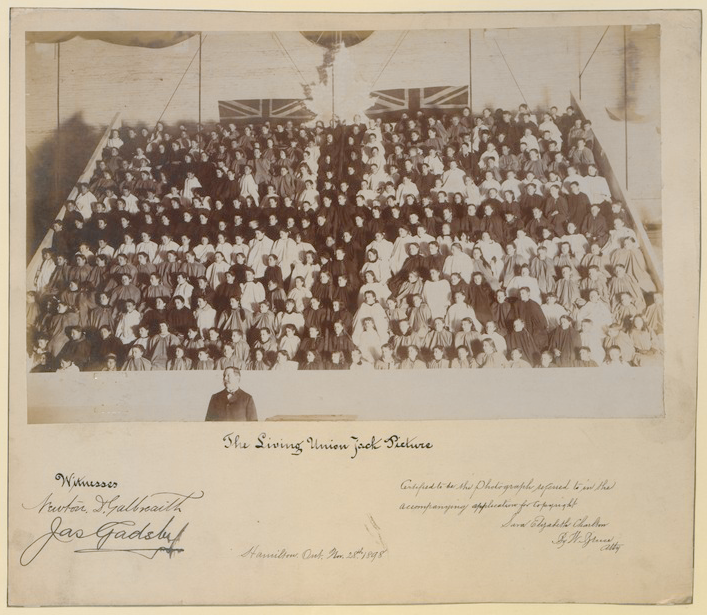
Has Canadian colonialism finally been displaced?: Assessing Indigenous economic and social program innovation in Canada
Ken Coates
Read Abstract Read Article
University of Saskatchewan
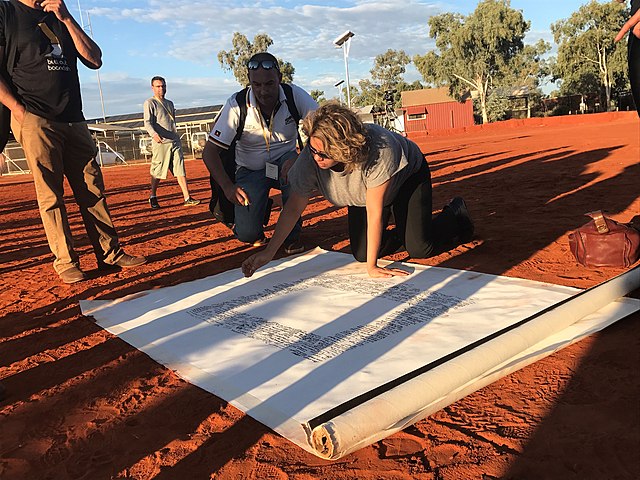
Building an economy and building a nation: Gugu Badhun self-determination as prefigurative resistance
Theresa L. Petray
Read Abstract Read Article
James Cook University
Janine Gertz
James Cook University

Critical reflections on Indigenous peoples’ ecological knowledge and disaster risk management in Australia: A rapid evidence review
Kim Spurway
Read Abstract Read Article
University of New South Wales
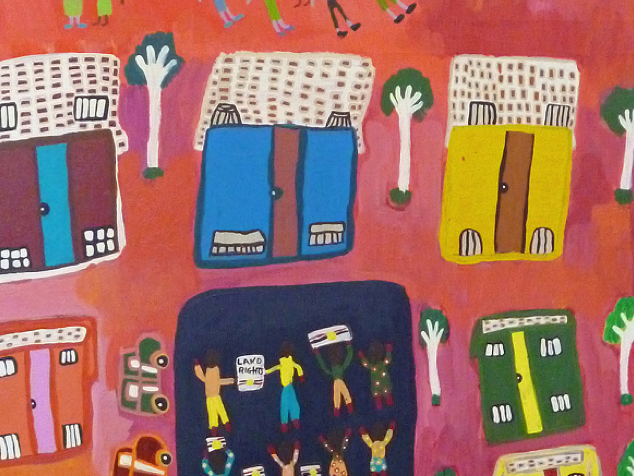
A tale of (at least) three reports: Agency and discourse in the Alice Springs town camps
Louise Crabtree
Read Abstract Read Article
Western Sydney University
Vanessa Davis
Tangentyere Council, Alice Springs
Denise Foster
Tangentyere Council, Alice Springs
Michael Klerck
Tangentyere Council, Alice Springs
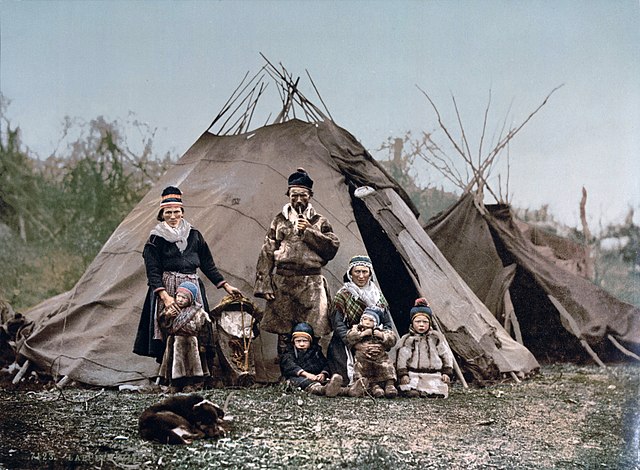
Identity construction of Sami people with disabilities
Line Melbøe
Read Abstract Read Article
UiT - The Arctic University of Norway
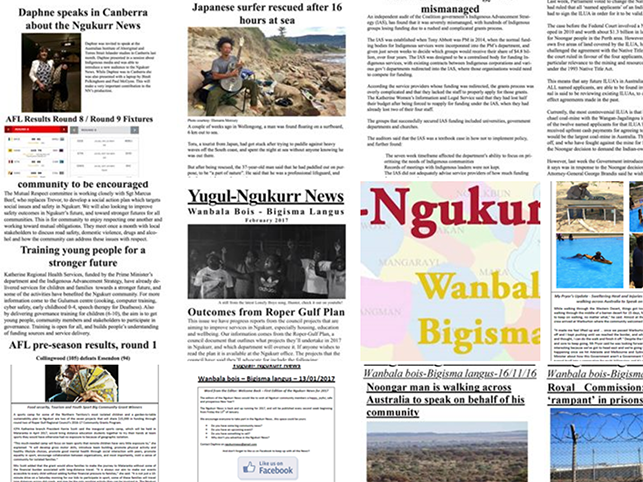
The capacity to aspire and the Ngukurr News: Exploring the economic potential of a community newspaper
Julie Hall
Read Abstract Read Article
University of Wollongong
Kate Senior
University of Wollongong
Daphne Daniels
Ngukurr community, Australia

Disability income reform and service innovation: Countering racial and regional discrimination
Michelle Fitts
Read Abstract Read Article
Institute for Culture and Society, Western Sydney University
Karen Soldatic
Institute for Culture and Society, Western Sydney University
Essays
Book Reviews
-

The Hollywood War Film : Critical Observations from World War I to Iraq
Iqbal Barkat
Read Review
Macquarie University
Strategic Silence: Public Relations and Indirect Communication
Paul Ryder
Read Review
University of New South Wales
Mia Mia Aboriginal community development: fostering cultural security
Annick Thomassin
Read Review
Australian National University

